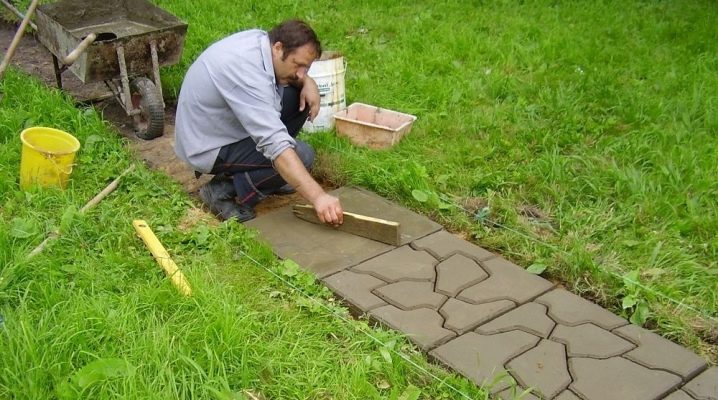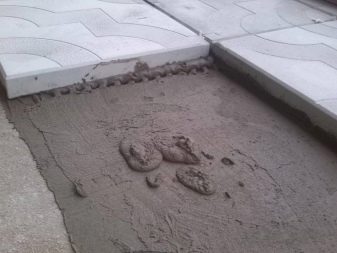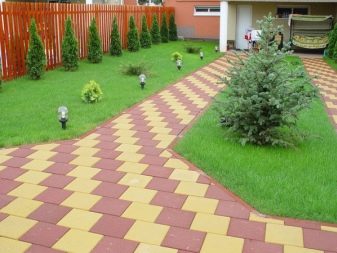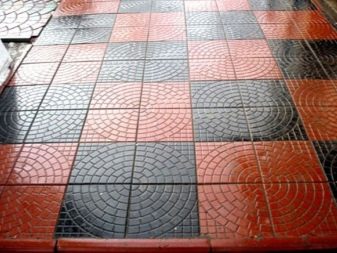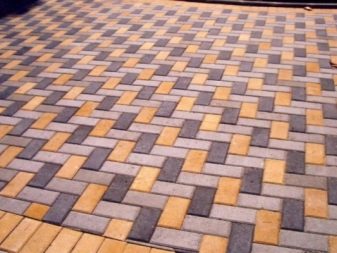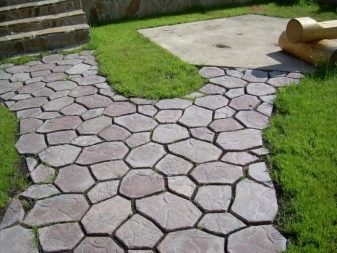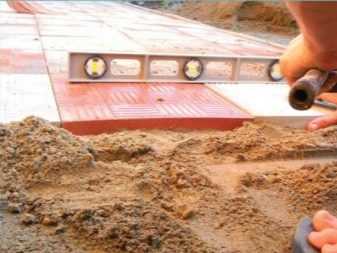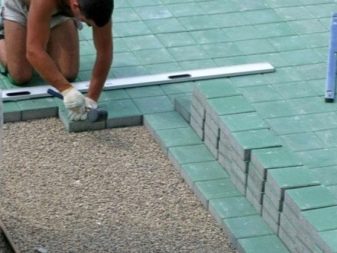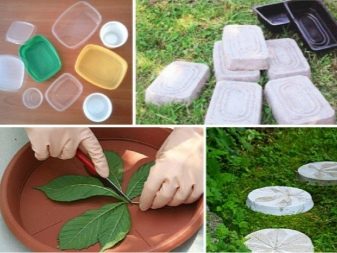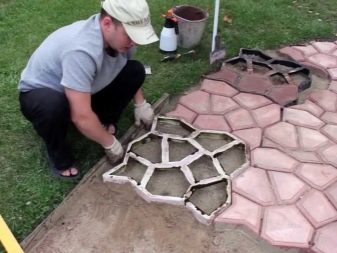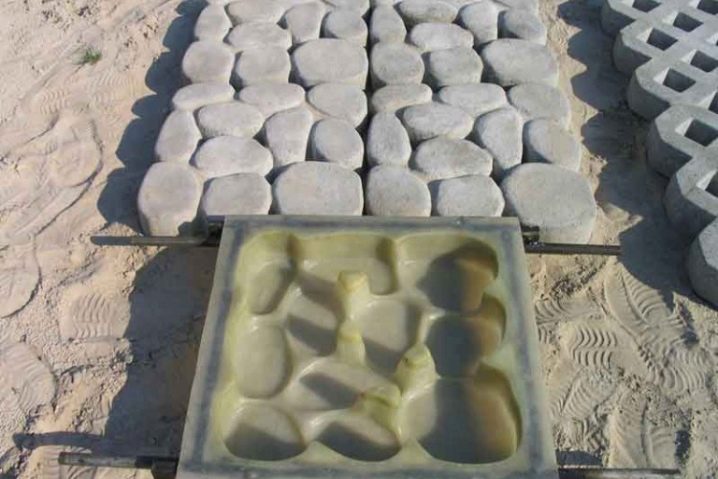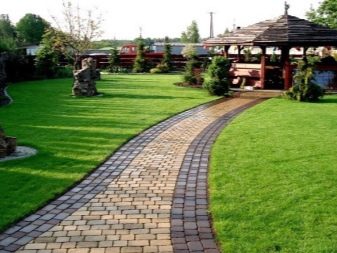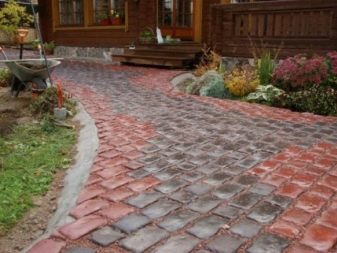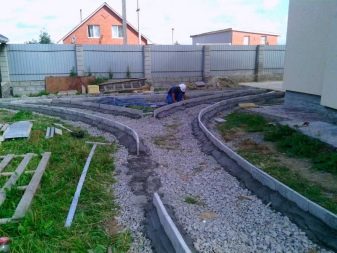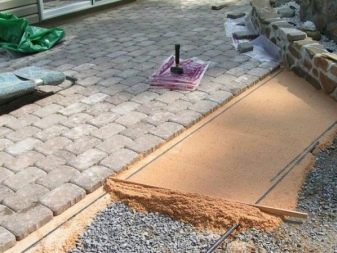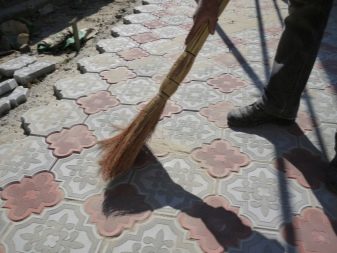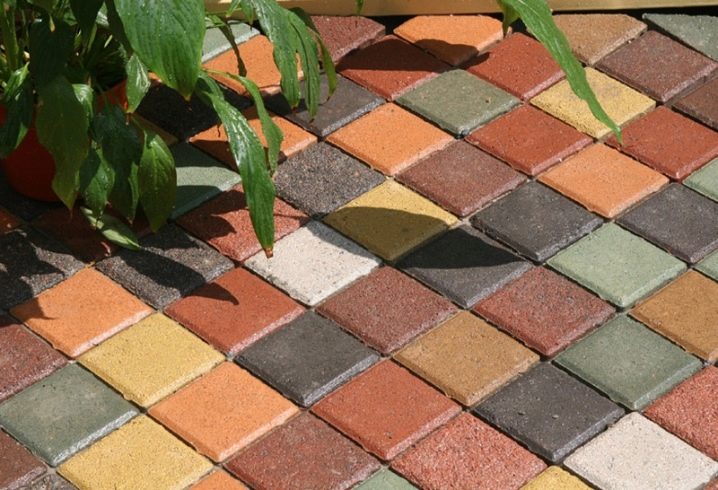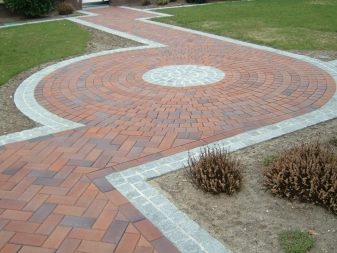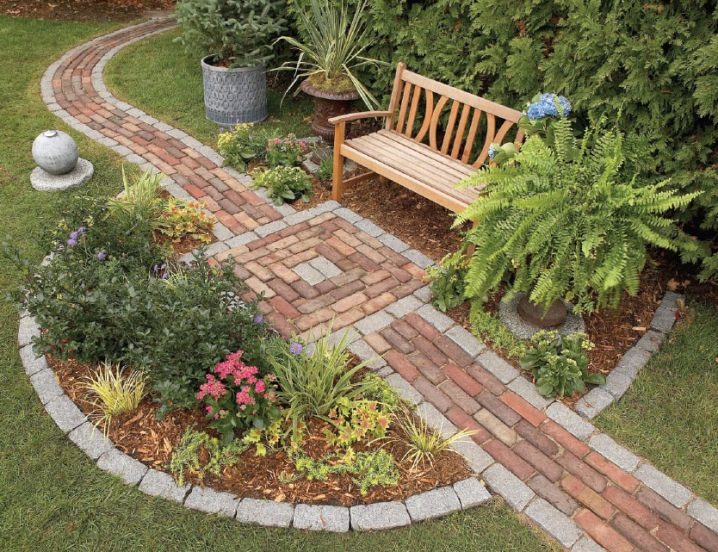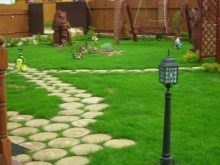Laying paving slabs in the country with their own hands
Among all the stages of arrangement of the local area in the country, which are the most significant, laying paving slabs is one of the most prominent places. And it is quite natural, because the use of this material makes the site not only more convenient, but also very aesthetic. It is also noteworthy that the technology of laying such a tile is not very complex, so that all the work can be done by hand without the involvement of expensive professionals.
How can I post?
Before proceeding to the selection of materials and the preparation of the territory, the site owner must determine how he will lay the tiles. From the choice made directly depend on the size, shape and volume of materials used.
If we highlight the most popular styling schemes, their list will look like this:
- Order. This method, which is the least complex, is considered to be a classic. He suggests that tiles should be placed sequentially, one after another. As a rule, for such cases choose rectangular and square elements.
- With offset. Not less widespread option of laying relating to the traditional category. It provides for the location of the tiles, in which their joints do not match, and allows for the use of several shades and textures. Mandatory condition of the scheme - the same form of all elements.
- Chess. A feature of this technique is the use of two-color tiles with equal sides. Despite its simplicity, the presented method of laying makes the tracks more spectacular, which is explained by the beautiful play of colors.
- Herringbone. This method involves placing tiles at an angle of 45 or 90 degrees. By choosing this option, the owner of the site can use both rectangular and shaped elements. A more complex type of Christmas tree is braided - laying road tiles withalternation (far and wide). To build a clear pattern, it is advisable to work with no more than two colors.
It is worth mentioning such a decision as the formation of various geometric shapes.
Creating such compositions involves the use of multi-colored tiles that have the same shape.
Materials and tools
Having decided on a way of laying, the owner of a site can start the choice of a tile. It is necessary to consider not only external, but also functional characteristics of purchased items, namely:
- withstand load;
- surface smoothness;
- possibility of processing.
As for the most common material from which paving slabs are made, this is concrete. The technology of manufacturing such products is extremely simple, and their strength and durability rightly deserve high praise.
In order to correctly calculate the number of tiles required for the arrangement of the tracks, it is advisable to sketch out the rough plan of the latter, which will indicate their dimensions and shape. Based on the working area and the size of tiles used,You can easily determine the sufficient amount of the selected material.
In addition to the tile, the owner of the dacha will need:
- dry cement;
- sand;
- small pieces of rock (gravel or gravel);
- small pegs made of wood or metal;
- spirit level;
- Master OK;
- carpenter's hammer made of rubber or hard wood (mallet);
- tile knife;
- tamper;
- angle grinder (Bulgarian);
- profile;
- geotextile (material that protects tiles from failures);
- thin durable thread (twine).
If the arrangement of pavement paths is carried out on the formed section, then the owner of the dacha should get a wheelbarrow for transportation of excess soil, and instead of manual tamping it makes sense to use a vibrating machine.
Ways
In a situation where the landlord stakes on homemade paving slabs, he should purchase all the necessary materials, not forgetting to make suitable forms for pouring. The described type of coating involves the use of a mixture of sand and cement (DSP), and the latter should relate to the brand M400 or higher. Another important point is the use of plasticizers, making paving slabs more elastic.As for giving the desired shade to the manufactured elements, the use of appropriate pigments allows to solve this problem.
Special attention should be paid to the forms to fill. If the site owner wants to save on the purchase of such products, the following solutions may be useful to him:
- Food pots made of plastic. To reduce the time of manufacturing the required number of tiles, it is desirable to use as many of these molds as possible.
- Regular boards, which are a great alternative to the above option.
- Sheet metal frame. To obtain such forms, it is enough to disassemble the old barrel, removing iron hoops from it. By bending the metal so that its contours are smooth, you can get original molds that are well suited for materials that imitate flagstone - plates of good natural stone.
A step-by-step guide for making tiles for garden paths is presented below:
- Mix 3 parts of sand with 1 part of cement, using the capacity of a suitable volume.
- In small portions add water to the mixture, mixing everything thoroughly to obtain a consistency,resembling a dense dough.
- Prepare the molds, well lubricating them from the inside with engine oil to avoid sticking of the solution.
- Fill the forms with the prepared mixture, slightly moving and pressing it down. This is necessary in order to avoid the occurrence of voids. Carefully level the back surface of the tiles is not necessary: being rough, it will more reliably dock with the base.
- Shake the molds slightly so that the composition fills all their corners.
- Leave the tiles to dry in the fresh air, avoiding direct sunlight.
In order for the paving slabs to become hard, you will have to wait 5-7 days, after which the manufactured elements can be carefully pulled out of the molds.
After you need to spend another 2-3 decades, for which the tile is completely dry and will be as strong as possible.
Track arrangement
To begin with, the owner of the suburban real estate should decide on the places allocated for pedestrian areas. It is desirable that they repeat the direction of the greatest movement of the dacha, providing easy access to all of its significant objects.
Preparatory land works
All the soil located in the places where the tracks are laid must be removed to a depth of 10-30 cm. When performing this action, it should be taken into account that the width of the recess to be created should include not only the dimensions of the track, but also the dimensions of the side stones and the drainage groove.
Curbing
This event can include both the use of finished concrete products, and their manufacture on site. Up to the moment how to set the curbs, you should make sure that the plane of the walkway has a slight slope, which ensures the flow of moisture. Then you can start installing the side stones on the liquid concrete solution with their subsequent fixing in the desired position - by means of pegs made of wood or metal reinforcement.
Base arrangement
There are two main ways:
- Sand cushion. The considered solution is relevant for tracks, the length and width of which are small. A decimeter layer of sand is placed on the ground, which is moistened and thoroughly rammed. Geotextiles are placed on top, and then - a layer of gravel or gravel, also having a decimeter height. After it is necessary to tamp the surface with a rammer, add another 5 cm of sand and carry out the final moistening and compaction.
- Concrete base. Stronger than the previous one, this type of base can be used regardless of the dimensions of the created tracks. The initial stage of its development involves the filling in the recess of the 5-cm layer of sand, which must be thoroughly moistened and compacted. Next, you should prepare a mixture of cement with sand in a ratio of 1: 3 and pour it about the same layer on top, not forgetting to level the mortar with a trowel.
Laying the decorative layer
To solve this problem, you can use a rubber or wooden joinery hammer and spirit level. As for trimming tiles, it is easiest to do it with an angle grinder. To deepen the elements in the substrate should slowly, gently tapping on them and accurately placing them in the same plane. Besides, between decorative tiles you need to maintain a distance of several millimeters. Subsequently, these gaps must be filled with the DSP, which ensures the strongest possible fixation of the coating elements.
Upon completion of paving, the surface must be cleaned of residual cement and sand using a brush. After that, it remains to just pour the created surface with clean water.
Rules and Tips
When buying a tile, the owner of the site should consider that a part of the material will turn into waste. First of all, this is explained by trimming paving slabs, which depends on the shape and dimensions of the elements used, as well as the way they are laid.
So, the most economical option is a parallel arrangement of tiles, and the most costly is their diagonal placement.
In addition, it is desirable to consider the following points:
- It is not recommended to equip paths at a distance of up to 70 cm from trees. Developing, the root system of the latter can seriously damage the created surface.
- If the intensity of movement along the tracks is average, then in most cases their width of 0.8 m is sufficient.
- In situations where the owner of the site plans to use tracks to transport luggage on wheelbarrows or to move a large number of people, the width of the cover to be created should be increased by at least 20 cm.
- In order for the subsequent work to be carried out with the least difficulties, it is desirable to designate the outlines of future tracks with the help of a thin lace stretched between pegs.
It should also be noted that the tracks laid out on a dry mix or solution on a rubble cushion can withstand the weight of a passenger car. If you put the materials on the base, reinforced by 1.5 times, you can get a track, which will not be terrible even a medium-sized truck.
Beautiful ideas for the yard
Practice shows that the original tile, made by hand, often looks more advantageous than the factory. To solve this problem yourself is quite simple:
- Tile in the form of leaflets. The creation of such elements involves the use of a combination of gravel, sand and cement in the ratio of 3: 3: 1. To obtain such plates, you can use any large leaves (alternatively burdock, zucchini or horseradish), carefully pressing the back of their side into the solution. Next you need to put the tiles in the shade and periodically spray them. Once the mortar has hardened in half, the leaves should be separated and the plates left to dry.
- Concrete circles. Typically, these elements are located in the environment of gravel or pebbles. Forms for round tiles are most often made from cut plastic buckets.
- Patterned tiles. The material of this decor is the DSP, the surface of which is pressed adorning elements - pebbles and shells, keys and coins, pieces of colored glass and more.
Finally, it remains to state that laying paving slabs in the country is a relatively cheap and at the same time effective way of refining the garden plot. To equip tracks from such material with your own hands, you do not need to contact specialists or purchase expensive inventory. It is enough to adhere to the recommendations listed above that allow solving this problem with the least amount of time and effort.
In the next video, watch a master class on making paving slabs with your own hands
